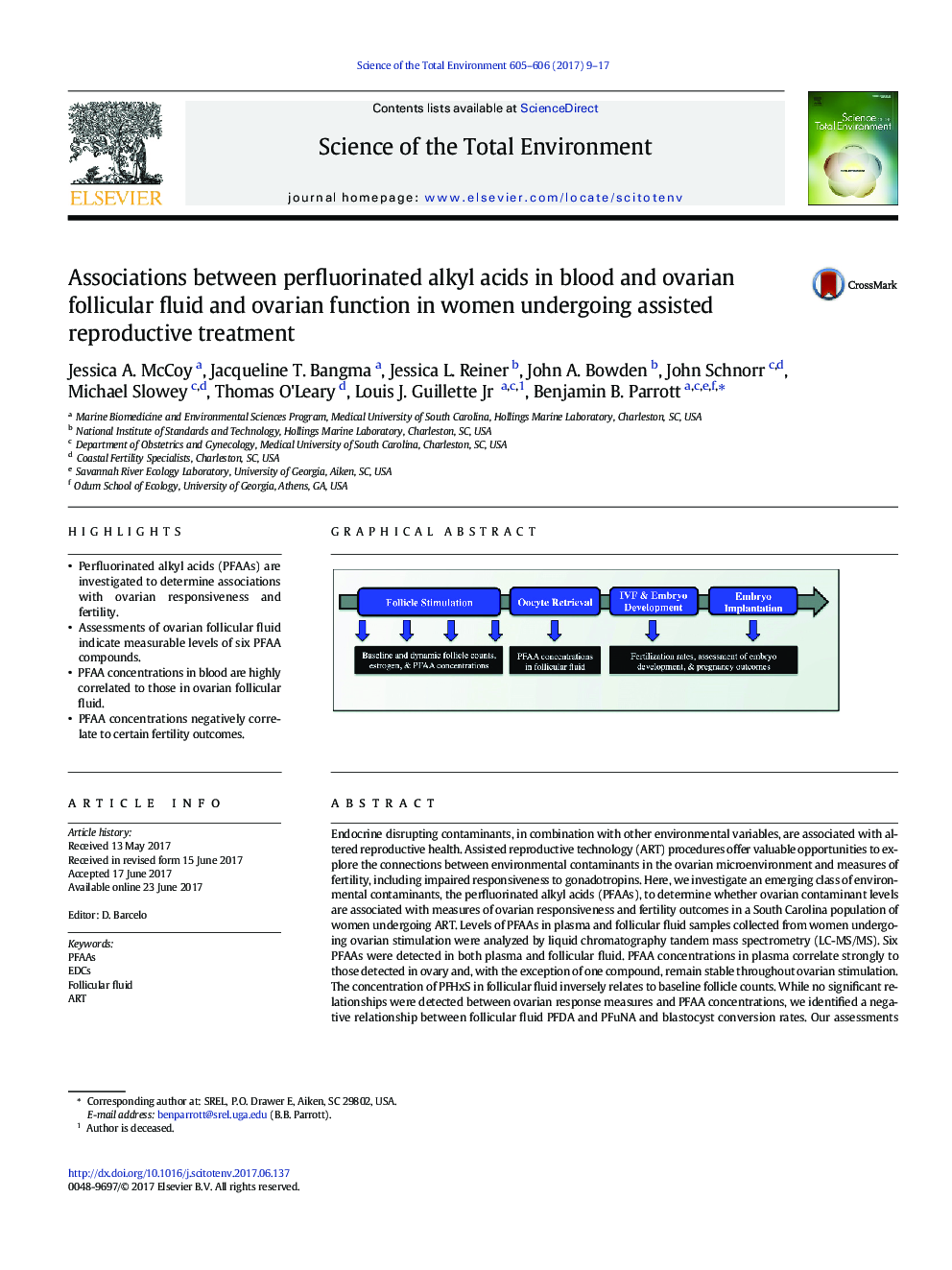| کد مقاله | کد نشریه | سال انتشار | مقاله انگلیسی | نسخه تمام متن |
|---|---|---|---|---|
| 5750567 | 1619695 | 2017 | 9 صفحه PDF | دانلود رایگان |
- Perfluorinated alkyl acids (PFAAs) are investigated to determine associations with ovarian responsiveness and fertility.
- Assessments of ovarian follicular fluid indicate measurable levels of six PFAA compounds.
- PFAA concentrations in blood are highly correlated to those in ovarian follicular fluid.
- PFAA concentrations negatively correlate to certain fertility outcomes.
Endocrine disrupting contaminants, in combination with other environmental variables, are associated with altered reproductive health. Assisted reproductive technology (ART) procedures offer valuable opportunities to explore the connections between environmental contaminants in the ovarian microenvironment and measures of fertility, including impaired responsiveness to gonadotropins. Here, we investigate an emerging class of environmental contaminants, the perfluorinated alkyl acids (PFAAs), to determine whether ovarian contaminant levels are associated with measures of ovarian responsiveness and fertility outcomes in a South Carolina population of women undergoing ART. Levels of PFAAs in plasma and follicular fluid samples collected from women undergoing ovarian stimulation were analyzed by liquid chromatography tandem mass spectrometry (LC-MS/MS). Six PFAAs were detected in both plasma and follicular fluid. PFAA concentrations in plasma correlate strongly to those detected in ovary and, with the exception of one compound, remain stable throughout ovarian stimulation. The concentration of PFHxS in follicular fluid inversely relates to baseline follicle counts. While no significant relationships were detected between ovarian response measures and PFAA concentrations, we identified a negative relationship between follicular fluid PFDA and PFuNA and blastocyst conversion rates. Our assessments indicate that plasma levels of PFAAs serve as a sound proxy of those in the ovarian compartment and that follicular fluid levels of specific PFAA compounds are inversely related to important clinical measures of reproductive health including baseline follicle count and post-fertilization success.
202
Journal: Science of The Total Environment - Volumes 605â606, 15 December 2017, Pages 9-17
